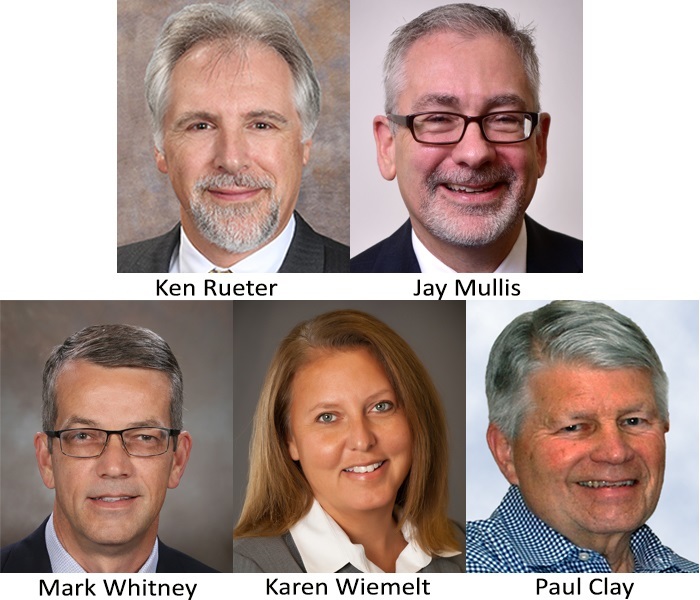 A diagram showing the Tank Closure Cesium Removal process at the Savannah River Site.
AIKEN, S.C. – EM has resumed processing high-level waste (HLW) inside the Tank Closure Cesium Removal (TCCR) module at the Savannah River Site (SRS) following an extended maintenance outage.
The innovative cesium-removal technology finished processing a batch of radioactive liquid waste last month, moving the TCCR feed tank, Tank 10, closer to final closure. It was the third batch of salt waste processed at SRS since the site began using TCCR in early 2019.
EM and liquid waste contractor Savannah River Remediation (SRR) suspended TCCR in the summer last year when the main transfer pump used to prepare salt waste batches inside Tank 10 reached its end life.
Crews removed that pump from the tank and installed a replacement in March 2020, just before SRS entered essential mission-critical operations status due to the COVID-19 pandemic. Preparations for TCCR’s third batch resumed at the end of May.
TCCR Senior Project Manager Pen Mayson said that TCCR contributes significantly to the liquid-waste treatment process.
“Including the 89,430 gallons completed in the third batch, we have now processed and removed cesium from nearly 300,000 gallons of Tank 10 material, bringing the tank a step closer to final closure,” Mayson said.
TCCR consists of a modular ion exchange process with an engineered resin located adjacent to Tank 10, for the removal of radioactive cesium from salt waste.
Building on the research and development of EM’s Savannah River National Laboratory, the experience of commercial nuclear plant decontamination, and the Fukushima Daiichi accident cleanup, TCCR accelerates waste retrieval and tank closure efforts, and provides a supplemental treatment capability.
The majority of the salt waste inside the tanks at SRS will be processed through the Salt Waste Processing Facility that is preparing to begin operations. TCCR will supplement that processing to help accelerate EM’s liquid waste mission. Lessons learned have been shared with EM’s Hanford Site, which is implementing similar technology in support of providing tank waste feed for the Direct-Feed Low-Activity Waste approach for low-activity tank waste treatment.
SRR President and Project Manager Phil Breidenbach said TCCR is an innovation that has moved salt waste processing into the 21st century, combining first-of-a-kind technology with commercial nuclear cleanup practices and disciplined nuclear operations.
“These repairs will enable TCCR to be an active part of our ongoing activities to disposition liquid waste and operationally close tanks at SRS,” Breidenbach said.
-Contributor: Jim Beasley
 Participants in the first of three virtual town halls that will focus on the Oak Ridge Office of Environmental Management’s (OREM) Vision 2020 achievement are shown clockwise from left: Ken Rueter, UCOR president and CEO; Jay Mullis, OREM manager; Paul Clay, ASRC (Arctic Slope Regional Corporation) Industrial Services president; Karen Wiemelt, Jacobs senior vice president; and Mark Whitney, Amentum president.
OAK RIDGE, Tenn. – DOE’s Oak Ridge Office of Environmental Management (OREM) and its contractor, UCOR, are celebrating reaching Vision 2020 next month. This EM 2020 priority is a historic achievement that will mark the first-ever cleanup of a uranium enrichment complex in the world.
For three weeks leading up to the celebration event, OREM and UCOR are hosting a series of virtual town halls to engage the public and raise awareness about this major cleanup accomplishment. Panelists will discuss the different aspects involved in reaching the achievement, and they will talk about what the future holds for the transformed site.
Titled Vision 2020 Conversations: Transforming an Enrichment Complex into a Community Asset, the virtual town halls provide an opportunity for local residents, state and community leaders, contractors, and employees across the EM complex to hear perspectives from members of the workforce who helped make this accomplishment possible. Participants will also be able to submit questions during these meetings.
The first session is scheduled for Thursday, Sept. 24, from 4:30 to 6 p.m. In this session, panelists will delve into the work that led to the removal of 500 dilapidated, contaminated structures that spanned the footprint of 225 football fields.
The panelists, pictured above, will address the project approach, challenges that were encountered, and lessons from the site for other cleanup sites as they perform similar work.
Subsequent sessions are slated for Wednesday, Sept. 30, and Thursday, Oct. 8, both from 4:30 to 6 p.m. The second session will explore Oak Ridge’s partnership model and if it can be applied to other communities. In the third session, panelists will share ideas for the site’s future.
The three Vision 2020 Conversations will have a moderator and be hosted on Zoom, a video conferencing site. To attend one or more of the sessions, register at vision2020-town-halls.eventbrite.com. Registration is free, but it closes 24 hours prior to each session.
-Contributor: Susanne Dupes
|